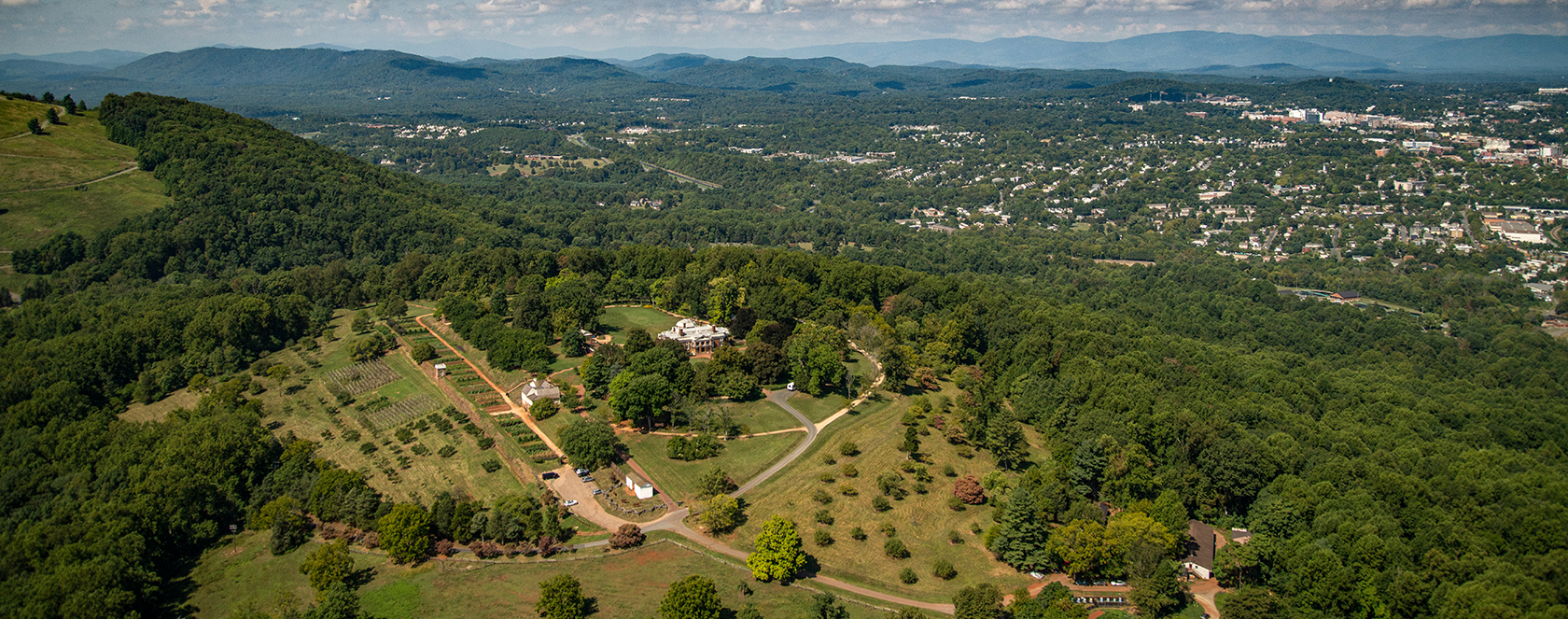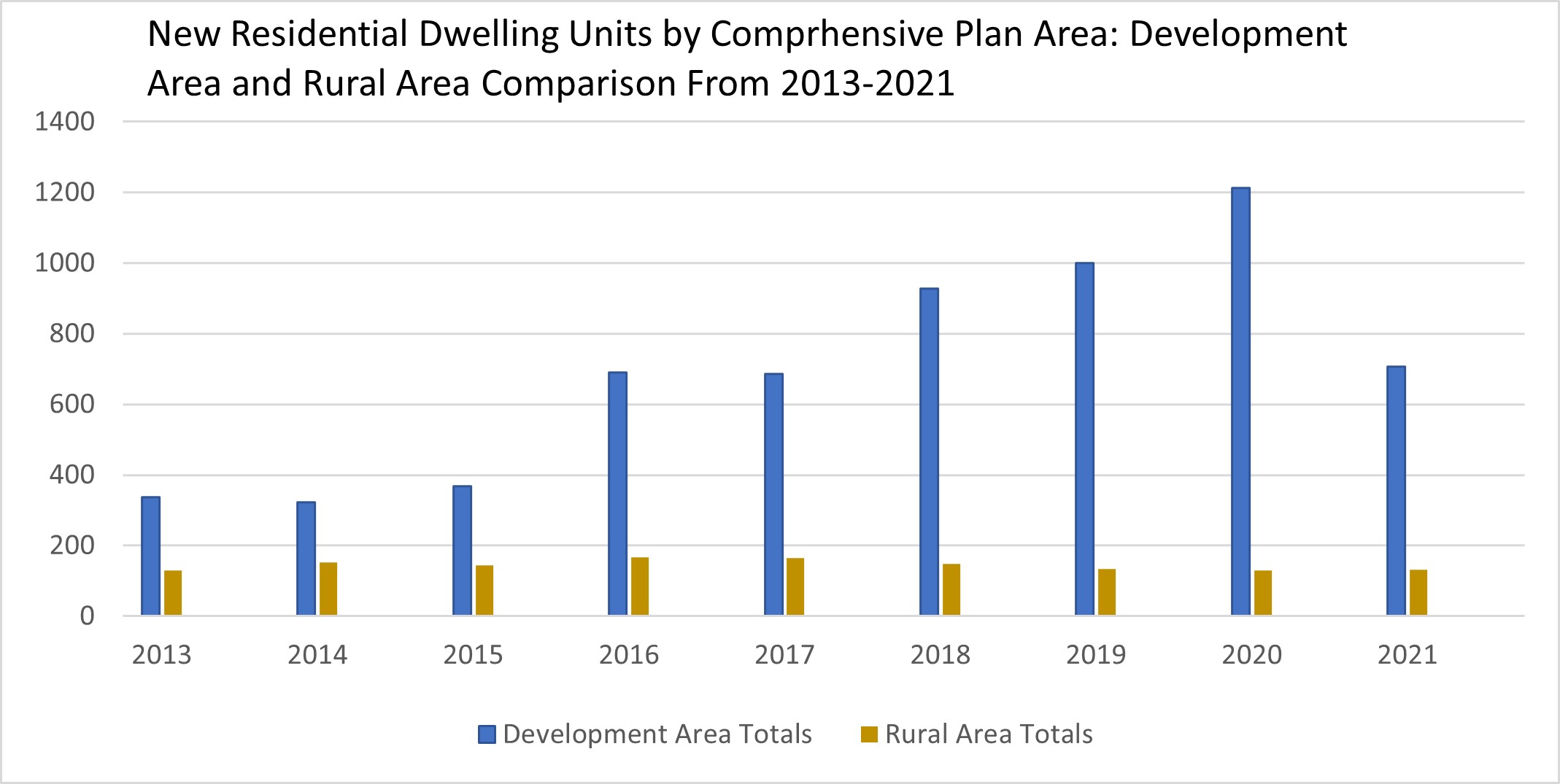As PEC wrote in April, Albemarle County is in the midst of updating its Comprehensive Plan (known as AC 44). The first part of this process is a review of the County’s current Growth Management Policy. This step will investigate how the currently designated Development Areas could support future growth and if changes are needed.

The May 24, 2022, Draft Land Use Buildout Analysis, conducted by consulting firm Kimley Horn on behalf of the County, concluded that Albemarle County’s existing growth areas have sufficient capacity to support both future residential and non-residential growth for the next 20 years.
We agree with this conclusion. By directing development to existing growth areas, Albemarle would encourage revitalization and infill rather than promote costly sprawl and inefficient land use. In doing so, the County can more easily integrate affordable housing and achieve walkable neighborhoods, improving quality of life for current and future residents — a vision we can all get behind.
The Planning Commission, however, is less confident and believes the analysis overestimates the buildout density of the available land for residential and non-residential growth, and discussed the need to change the Growth Management Policy to increase land available for development.
A Multi-Decade Commitment to Smart Growth
Directing growth to areas with existing services eases the financial strain on local governments and residents, whose taxes would rise to cover increasing long-term maintenance costs. Expanding growth boundaries at the fringes of current development only incentivizes low-density auto-dependent suburban sprawl. The adverse social, economic, ecological, and climate-related impacts of urban sprawl are inconsistent with the County’s overall commitments detailed in the existing Comprehensive Plan, Affordable Housing Plan, and Climate Action Plan.
A review of Albemarle County’s Year End Building Reports (2013 to 2021) shows that development has consistently been directed more into Development Areas rather than Rural Areas; this tendency indicates the effectiveness of present policy.

Albemarle’s multi-decade commitment to smart growth is working and should continue.
Considering Climate
Discouraging the wasteful clearing and inefficient use of land – a.k.a. sprawl – is one of the best ways to fight climate change and promote resiliency. Our forests and agricultural resources protect air and water quality, wildlife habitat, and ensure food security for our communities, making these places healthy and enjoyable to live in.
The latest Intergovernmental Panel on Climate Change (IPCC) report underscores the responsibility and urgency incumbent upon leaders — including local governments — to take fundamental action on climate change. The transportation sector contributes the largest source of national greenhouse gas (GHG) emissions. In Albemarle County, transportation emissions constitute a whopping 52 percent. Ecologically-sound land use decisions are also good climate and economic decisions. We encourage Albemarle County not to abandon or reverse its stated commitments to climate by promoting inefficient, sprawling, and auto-dependent land use. Instead, we urge officials to prioritize smart growth principles.
As Albemarle County continues to undertake the Comprehensive Plan update process, climate change must be integrated into discussions early on as one of a select few lenses through which all decisions — including the new Growth Management Policy — are viewed.
[Learn more about climate action in Albemarle at pecva.org/climate]
Planning with Charlottesville
We must be intentional and deliberate in how we plan for growth if we intend to create equitable communities with parks, green space, great trail and sidewalk systems, and easy access to essential services.
Directing new development to and investing in existing neighborhoods enhances the community for all, rather than creating a ring of new development on the outskirts while leaving outdated strip malls or old industrial sites to deteriorate.
Many of the places where the community would like to see more walkability, affordability and economic revitalization are in the City of Charlottesville; the County’s analysis did not factor in this desire. Also, in a historic break from precedent, the City is set to greatly expand the amount of residential housing it has, providing more capacity to accommodate future growth in the area. Again, Albemarle County’s planning does not consider this new direction.
[Learn more about Charlottesville’s new Comprehensive Plan and the Zoning Code rewrite, which kicks off on June 27 at cvilleplanstogether.com]
The City’s efforts to become both more dense and more livable would likely be undermined if the County opens up undeveloped land on its outskirts. That is because these lands are usually much more attractive to profit-seeking developers for their cheaper land prices, fewer complex site challenges, and ability to build more expensive single-family homes on larger lots. This approach is not beneficial for the community as a whole, which will bear the long-term costs of building and maintaining infrastructure and services. And it’s not even good for the future residents, who will end up living further from services and infrastructure.
Most importantly, Albemarle County is already a great place to live precisely because of its longstanding commitment to natural resource protection and smart growth.
We continue to support investments and redevelopment opportunities within the existing Development Areas as well as the independent City of Charlottesville, as they enhance social, economic, and environmental outcomes and civic ties.
What’s next? Attend an open house
Albemarle County will hold one virtual open house and two in-person open houses this June. These open houses are an opportunity for you to share your thoughts on the Growth Management Plan.
County staff will be asking community members to share input on various options for growth management in the county, and how these options impact equity, climate action, and other quality of life factors. They will also be available to answer questions about the AC44 Comprehensive Plan, the current Growth Management Policy and Development Areas, and recent development trends in the county.
Virtual Open House
June 17, 2022 @ 12 – 1 p.m.
Online [Zoom link]
AC44 Open House: Northside Library
June 21, 2022 @ 4 – 6 p.m.
Location: Northside Library Meeting Room, 705 Rio Road West, Charlottesville, VA 22901
AC44 Open House: County Office Building 5th Street
June 22, 2022 @ 5:40 – 7 p.m.
Location: County Office Building, 5th Street, Room A, 1600 5th Street Ext, Charlottesville, VA 22902
If you aren’t able to attend one of the open house events, you can still comment on the land use buildout analysis and tell the County you’d like to see a greater focus on both public and private investment within Albemarle’s existing Development Areas rather than changing the growth policies through this questionnaire. You can also stay informed on the Comprehensive Planning process by registering on the Albemarle County 2044 Comprehensive Plan webpage.
This article was written by our new Senior Land Use Field Representative for Albemarle and Greene counties, Rob McGinnis. Please feel welcome to reach out to him at rmcginnis@pecva.org or (434) 962-9110 with any questions.
